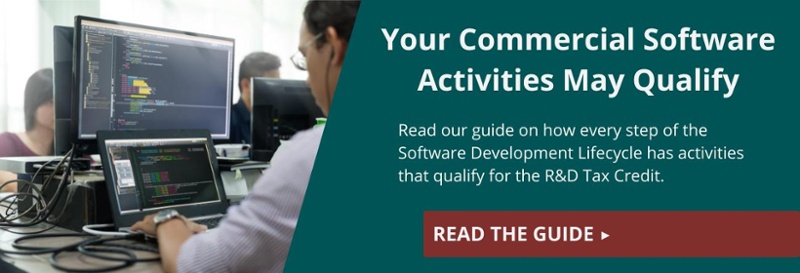
Peter Harrington started his career as a programmer, and prior to joining Black Line Group, ran a 90-person software company. As our Chief Revenue Officer, he draws from a vast wealth of software-related knowledge. After all, he’s performed and managed functions within every department of a software company in his 30+ years of experience in the industry.
Peter has seen just about everything when it comes to how companies develop software and claim the R&D Tax Credit. Because it can be complex, he’s noted several areas in which companies would benefit through the expertise of a tax professional to help them maximize their benefits.
Here are two of the more common pieces of advice Peter has for organizations:
Understand the scope of the R&D Tax Credit
Many companies don’t have a firm grasp of the breadth or depth of the R&D Tax Credit, putting them at a disadvantage right from the start. Priority #1 is considering the time put in by the staff that perform qualified activities. When gathering customer enhancement requests for upcoming releases, consideration should be given to the time staff spends collecting, understanding, and documenting the requests. And this means ALL employees involved, whether in sales, sales support, customer support, QA, or any other department.
Also, consider the time spent reviewing the enhancement requests and prioritizing them to determine what goes into the next release. In addition, there’s the time spent estimating the work effort. Again, all staff should be accounted for in this process, which leads to Peter's second piece of advice…
Consider ALL personnel and their contributions
Often overlooked are the qualified activities of all individuals who contribute to testing: a minor enhancement, new release, or new product—is critical. This can relate to unit, system, integration, alpha, and beta testing, and some aspects could include varying degrees of customer involvement.
Document the time spent on qualified activities throughout the seven phases of the Software Development Lifecycle, which are:
- Planning
- Requirements & Analysis
- Systems Design
- Development & Coding
- Testing & Integration
- Implementation
- Operations, Maintenance, and Enhancements
Follow any of the above links to get more information to better understand these phases of the Software Development Life Cycle and how they relate to qualifying expenses.
Regardless of what phase of the process an organization is considering in relation to the R&D Tax Credit, the activity must pass The Four-Part Test.
The Four-Part Test
Once you’ve identified potential qualifying activities, run it through the four-part test to verify. The four parts of the test are:
- Permitted Purpose. This is the activity intended to make or improve either a product or process that results in improved function, performance, reliability, quality or cost efficiency.
- Technical Uncertainty. This is the activity intended to eliminate technical uncertainty when developing or improving a product or process related to methodology, design, techniques, formulas or inventions.
- Process of Experimentation. This is the activity that includes a process of experimentation to eliminate or resolve technical uncertainty. During the process, various alternatives and approaches are evaluated by modeling, simulation, trial and error, prototyping and other methods.
- Technological in Nature. The process of experimentation must rely on the hard sciences (engineering, physics, biology, chemistry, computer science).
As always, be sure to talk with a tax specialist about how to avoid R&D Tax Credit mistakes.





